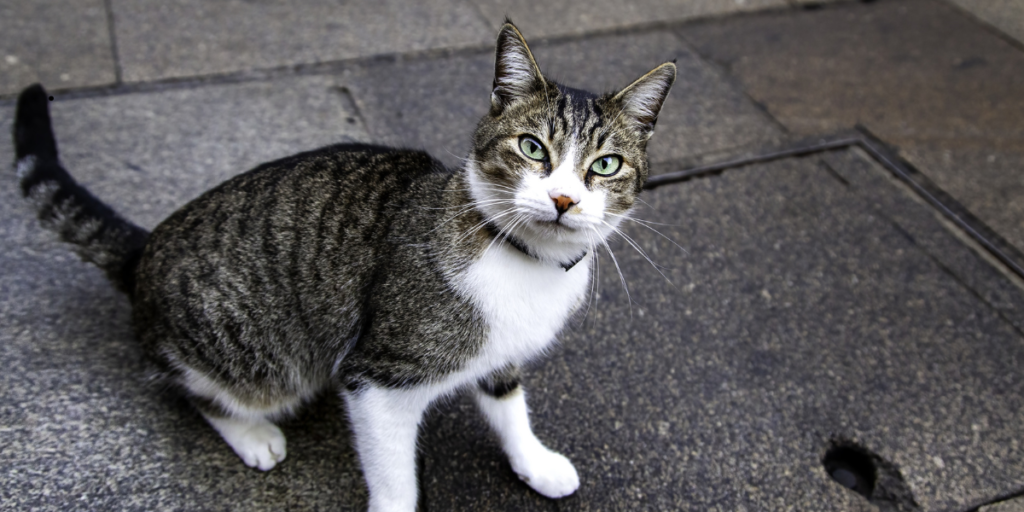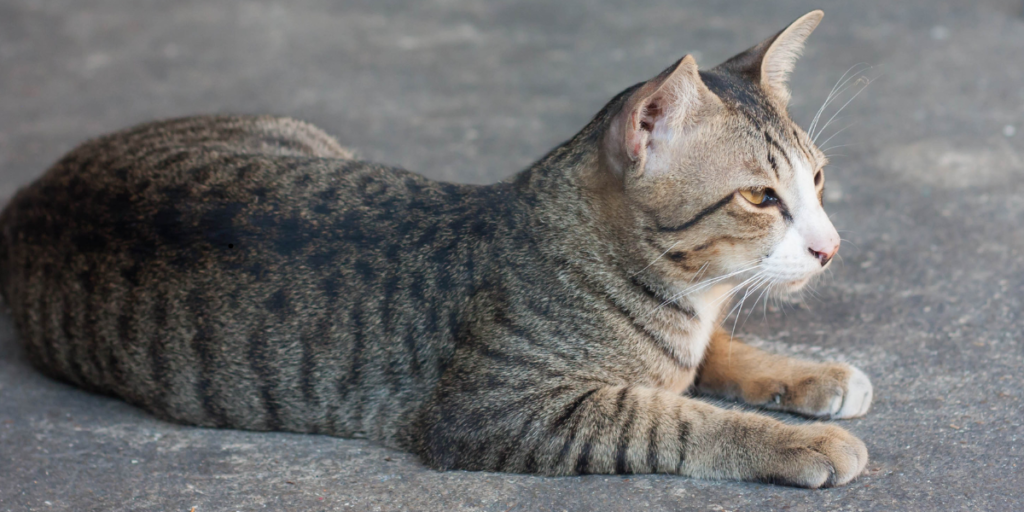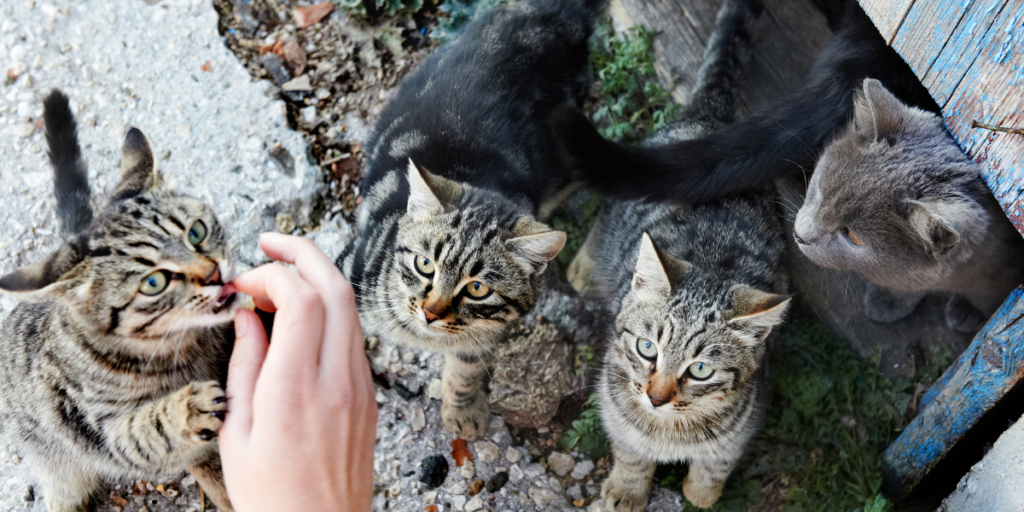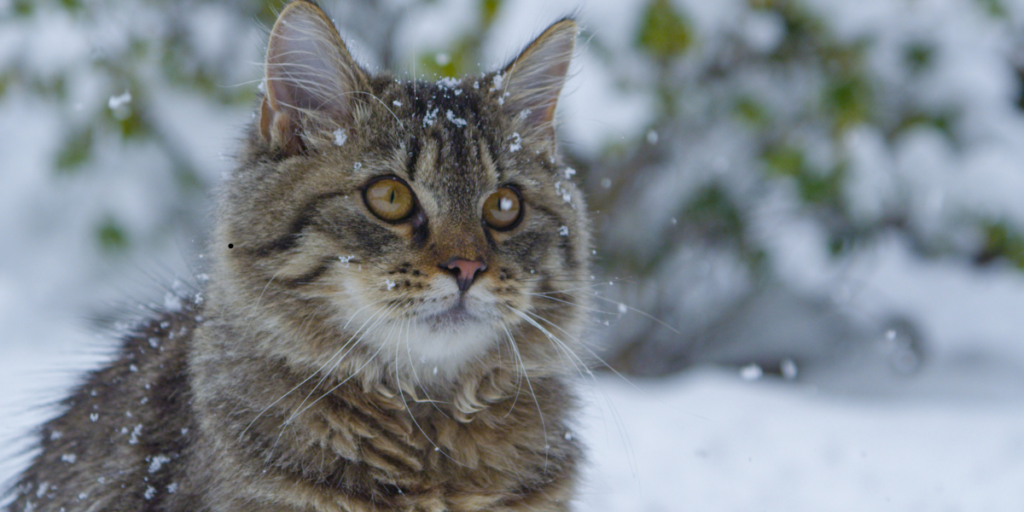Stray Cat Behaviour: I frequently see stray cats wandering around my community, and their behaviour can be quite complex and fascinating. Understanding stray cat behaviour is vital for all people who interact with those animals, whether or not out of concern for his or her properly-being or actually out of curiosity. In this newsletter, I will discover numerous factors of stray cat behaviour, which includes their social systems, communication techniques, and seasonal behaviour. By gaining insights into their lives, I wish to promote compassionate interactions and higher assist these resilient creatures.
Key Takeaways Stray Cat Behaviour
- Social Structures: Stray cats can form complicated relationships, regularly creating colonies with installed hierarchies.
- Feeding Behaviours: They are instinctive hunters and scavengers, counting on both to continue to exist.
- Communication: Stray cats talk through vocalisations and body language, which I can understand with statement.
- Adoption Potential: Many stray cats may be correctly socialised and followed into houses with the proper care and interest.
- Community Awareness: Educating others about stray cat behaviour can result in progressed remedy and management of those animals.
What Are Stray Cats?

Stray cats are domesticated tom cats that I often see in my place. They may additionally had been abandoned or misplaced their way. Unlike feral cats, that are born and raised inside the wild, stray cats have had a few exposures to human beings, influencing their behaviour and adorableness. They frequently display a variety of socialisation ranges, from being wary of human beings to looking for companionship. Understanding what defines a stray cat is essential for folks that desire to assist them, as their behaviours frequently reflect their past stories with people, making them distinct from their absolutely feral counterparts.
1. Characteristics of Stray Cats
Stray cats exhibit a range of traits fashioned by their surroundings and reviews. Often, they’re wary of human beings, having learned to be careful in an effort to live on. Unlike home cats, which are usually socialised from a young age, strays may not have had constant human interaction. Within these businesses, you could observe wonderful social hierarchies and communication methods, which includes vocalisation and frame language, which help them navigate their frequently perilous lives.
In terms of physical traits, stray cats can range widely in look, reflecting their blended heritage and lack of normal grooming. While a few stray cats can also seem feral, others may be greater social and might even reply positively to human interplay, specifically in the event that they have had earlier nice reviews with human beings. Over time, with endurance and information, some stray cats may be rehabilitated and incorporated into houses, showcasing their capability as loving companions.
2 . The Role of Community
Community plays a essential position in shaping individual identities and fostering social connections. It serves as a foundational support system, imparting a feel of belonging that complements emotional nicely-being. In community settings, people locate possibilities for collaboration, sharing studies, and constructing relationships that go beyond mere acquaintance. The shared stories and cultural practices within a community can also enhance personal identities, allowing individuals to experience grounded in a bigger narrative.
Furthermore, communities are important for selling social brotherly love and resilience. They foster an surroundings where diverse perspectives and backgrounds can come together, encouraging speak and know-how.In this manner, a robust community now not best complements person lives however additionally creates a greater engaged and empowered society. As challenges get up, whether or not they may be economic, environmental, or social, resilient communities are higher geared up to evolve and thrive, demonstrating the power of collective action and shared responsibility.
The Importance of Understanding Stray Cat Behaviour

I find that expertise stray cat behaviour is essential for numerous motives, in general regarding safety and effective rescue efforts. Recognise their body language and vocalisations can assist me keep away from capability accidents, as stray cats may additionally scratch or chunk if they feel threatened.If you discover a stray kitten, examine its situation. If it appears deserted, recollect contacting a nearby animal shelter or rescue group for assistance. Moreover, understanding in their behaviours can manual powerful intervention strategies, which includes TAR, fostering a humane approach to coping with stray cat populations?
1 Enhancing Human-Cat Interactions
Enhancing human-cat interactions can extensively enrich both the pussycat and human enjoy, fostering deeper bonds and selling properly-being. One effective approach is to create an environment that encourages natural behaviours in cats, inclusive of climbing, scratching, and exploring. By incorporating vertical areas, like cat bushes or cabinets, and imparting interactive toys that stimulate their looking instincts, human beings can facilitate play that mimics a cat’s herbal predatory sports. The key is to examine individual cat alternatives, as each feline has particular personalities and luxury zones, permitting proprietors to tailor interactions that resonate with their pets.
Moreover, verbal exchange plays a crucial function in improving the relationship between human beings and cats. Understanding pussycat body language can cause greater harmonious interactions; for instance, recognising signs of love, such as gradual blinking or purring, can inspire deeper connections. B This mutual information no longer simplest enriches the human-cat dynamic however also helps the emotional health of each events, developing a more fulfilling companionship.
2. Promoting Community Awareness
Educating my community approximately stray cat behaviour can cause a greater compassionate technique to these animals. Awareness campaigns can tell residents approximately the significance of spaying and neutering their pets, for this reason lowering the number of strays within the first place. Additionally, community involvement in TAR programs can lead to a more sustainable solution for stray cat populations, reaping rewards each the animals and the neighbourhoods they inhabit.
Promoting community awareness is crucial for fostering a feel of belonging and responsibility among residents. When people are informed about neighbour problems, sources, and events, they become greater engaged in their neighbourhood, leading to a more potent, more cohesive community. This collective attempt not simplest enhances civic engagement however also builds consider and relationships amongst various corporations in the community.
Furthermore, community focus serves as a catalyst for social trade and empowerment. When individuals apprehend the demanding situations their community faces—consisting of meals insecurity, academic disparities, or public safety issues—they are more likely to participate in tasks that deal with these issues. By harnessing the power of storytelling and highlighting nearby heroes, these systems can inspire others to take action. Ultimately, selling community consciousness cultivates a subculture of involvement and help, where residents feel linked now not best to each other however also to the bigger mission of enhancing their community for destiny generations.
Common Behaviours of Stray Cats

1. Hunting and Feeding
Stray cats are instinctual hunters, and their behaviour regularly revolves around locating food. They commonly hunt small animals like rodents and birds, that are crucial for his or her survival. In urban environments, stray cats may additionally scavenge for food, rummaging through trash cans or awaiting people to provide scraps. Understanding their feeding patterns enables me offer suitable help, ensuring that stray cats acquire sufficient nourishment at the same time as also promoting responsible feeding practices.
2. Socialisation with Other Cats
Stray cat behaviour concerning social interactions can vary extensively. Many stray cats show off territorial behaviours, marking their territory with fragrance to communicate their presence. Some may additionally shape colonies, specifically where meals is ample, establishing social hierarchies that dictate get admission to to assets. Within these organisations, cats often interact in social grooming and play, which help give a boost to their bonds and improve their normal social dynamics. Understanding those interactions is vital for the ones worried in TAR or rescue efforts.
The Social Structure of Stray Cats
Stray cat behaviour often revolves around their social interactions, which may be fairly complex. In colonies, cats form social systems that dictate their relationships with one another.
1. Colony Formation
Stray cats may additionally form colonies to gain from group living, especially in areas in which meals is plentiful. These colonies often include dominant males and numerous ladies, with each cat gambling a role in maintaining the group’s brotherly love. The presence of kittens can also influence the dynamics, as mothers rely on other colony members for aid. Understanding these social structures can aid in community efforts to control stray cat populations successfully.
2. Interaction Among Cats
Cats inside a colony interact in diverse social behaviours, consisting of grooming and play, which assist give a boost to their bonds. These interactions are critical for organising and retaining hierarchies, in addition to for teaching younger cats important survival competencies. Observing those interactions provides insights into the social lives of stray cats, informing rescue and care strategies geared toward promoting their properly-being.
Table Stray Cat Behaviour
| Behaviour | Description | Meaning | Suggested Response |
|---|
| Hissing/Snarling | Vocalising with a harsh sound | Feeling threatened or scared | Give space; avoid approaching until calm. |
| Kneading | Pushing paws alternately on a surface | Comfort or contentment | Allow it to continue; it’s a sign of relaxation. |
| Purring | Soft, continuous sound | Contentment or self-soothing | Stay nearby; it may enjoy your presence. |
| Tail Up | Tail held high | Happy and confident | Approach slowly; it may be friendly. |
| Tail Down/Low | Tail held low or tucked | Fear or submission | Approach cautiously; give it space. |
| Rubbing Against Objects | Friction against surfaces or people | Marking territory or seeking affection | Gently pet if comfortable; it enjoys interaction. |
| Hiding | Seeking secluded spots | Feeling insecure or scared | Provide a safe space and avoid disturbing. |
| Hunting Behaviour | Stalking, pouncing on prey or toys | Natural instinct; may be looking for food | Observe from a distance; don’t interrupt. |
Communication Methods Among Stray Cats
Stray cats have evolved more than a few verbal exchange techniques to carry their needs and emotions, which may be crucial for information their behaviour.
1. Vocalisations
Stray cats utilise diverse vocalisations to speak with each other, which includes mews, growls, and hisses. For instance, mewing is often used to draw interest, while growling can also imply worry or aggression. Understanding these vocal cues helps me examine a cat’s emotional nation and reply correctly, improving the chances of successful interactions.
2 . Body Language
Body language is every other vital aspect of the way stray cats talk. Observing their tail function, ear orientation, and standard posture presents precious insights into their mood. A cat with a raised tail is usually friendly and assured, at the same time as a cat with flattened ears may feel threatened or scared. Recognise those signals enhances human-cat interactions and promotes a safer environment for both parties.
Seasonal Behaviours in Stray Cats

Stray cat behaviour can change considerably with the seasons, influencing their activities and social dynamics.
1. Breeding Season
Breeding season is a essential time in the life cycle of many species, marked via heightened sports and precise behaviours geared toward duplicate. Environmental factors consisting of temperature, meals availability, and photo period play big roles in figuring out the timing of breeding seasons, ensuring that offspring are born whilst assets are abundant and situations are favourable for survival. For example, many bird species time their nesting to coincide with the height of insect populations, presenting ample meals for his or her hatch lings.
The effects of breeding season extend past the on the spot intention of replica; they affect populace dynamics and surroundings health. Successful breeding can cause population booms, which in turn can affect food webs and aid opposition inside ecosystems.For many species, the ability to adapt to changing environments at some stage in breeding season is critical for their survival. Ultimately, breeding season is a brilliant reminder of the delicate stability that sustains life on Earth, underscoring the significance of protecting herbal habitats to make certain future generations can thrive.
2. Winter Adaptations
In comparison, all through wintry weather, stray cats showcase special survival techniques. They frequently are trying to find out warmer shelters, whether in deserted buildings or beneath porches, and might lessen their interest levels to conserve strength. This seasonal behaviour highlights the significance of providing good enough refuge and meals all through harsh weather conditions, making sure that stray cats can live on and thrive in their environments.
Winter diversification are crucial for many species that have to live on harsh cold situations. Animals hire various techniques to cope with plummeting temperatures and scarce sources. Some animals, together with sure frogs and turtles, have the capacity to freeze without suffering harm, way to unique proteins that prevent ice crystals from forming of their cells. Additionally, many mammals broaden thicker fur or feathers to offer insulation, even as a few birds might also grow extra down feathers to lure warmth.
On the plant facet, winter adaptations are similarly captivating. Deciduous timber, for instance, shed their leaves in autumn to limit water loss and reduce the risk of damage from heavy snow accumulation. Some conifers have needle-like leaves covered with a waxy layer that helps lessen water loss and protects towards cold temperatures. Overall, these adaptations highlight the top notch resilience of existence in excessive environments, showcasing the complicated approaches wherein organisms engage with their surroundings to undergo seasonal demanding situations.
Advantages of Understanding Stray Cat Behaviour
- Improved Safety: By expertise stray cat behaviour, I can lessen the hazard of injuries from bites and scratches, making sure more secure interactions.
- Effective Rescue Efforts: Knowledge of stray cats’ social dynamics and behaviours can inform humane trapping and care strategies, improving rescue efforts.
- Enhanced Community Relations: Promoting schooling about stray cats fosters network compassion and encourages collective efforts in managing stray populations.
FAQs About Stray Cat Behaviour
Q: Why are there such a lot of stray cats?
Stray cat populations regularly growth due to abandonment and sprayed or neutered pets. Many owners fail to take responsibility for his or her animals, leading to a growing population of strays. By teaching the public approximately the significance of spaying and neutering, I can help communities work toward decreasing those numbers.
Q: how can I assist stray cats?
I can assist stray cats by means of supplying food, water, and refuge. Involvement in neighbour TAR programs is every other powerful way to help manage the stray cat populace humanely. Additionally, teaching my community about stray cat behaviour and desires can cause better treatment and control of those animals.
Q: Are stray cats dangerous?
Most stray cats choose to keep away from humans. However, they can scratch or bite in the event that they feel threatened so method with caution.
Q: Can stray cats be adopted?
Yes, many stray cats can be correctly adopted if they’re socialised and acclimatised to indoor dwelling.
Q:what should I do if I find a stray kitten?
If you discover a stray kitten, examine its situation. If it appears deserted, recollect contacting a nearby animal shelter or rescue group for assistance.
Conclusion
Understanding stray cat behaviour is essential for fostering a compassionate technique to these animals. By recognising their instincts, social systems, and communication strategies, we are able to create a safer and greater humane environment for stray cats. Whether you are a worried citizen or a cat lover, your knowledge can help make a difference in the lives of these resilient creatures. With informed moves, we can make certain that stray cats receive the kindness and care they deserve.
